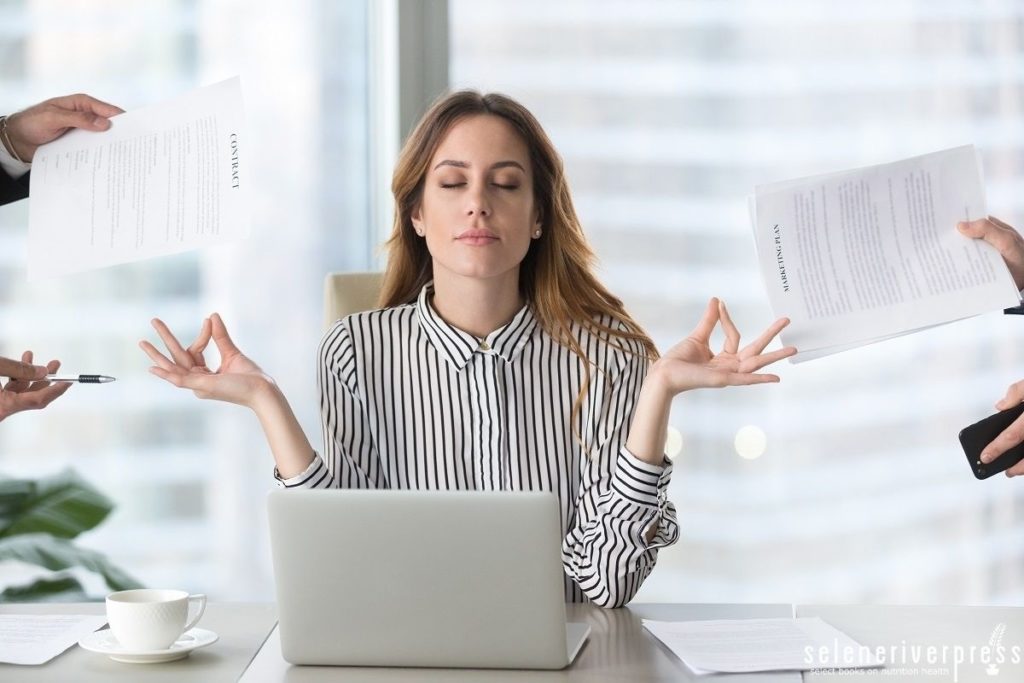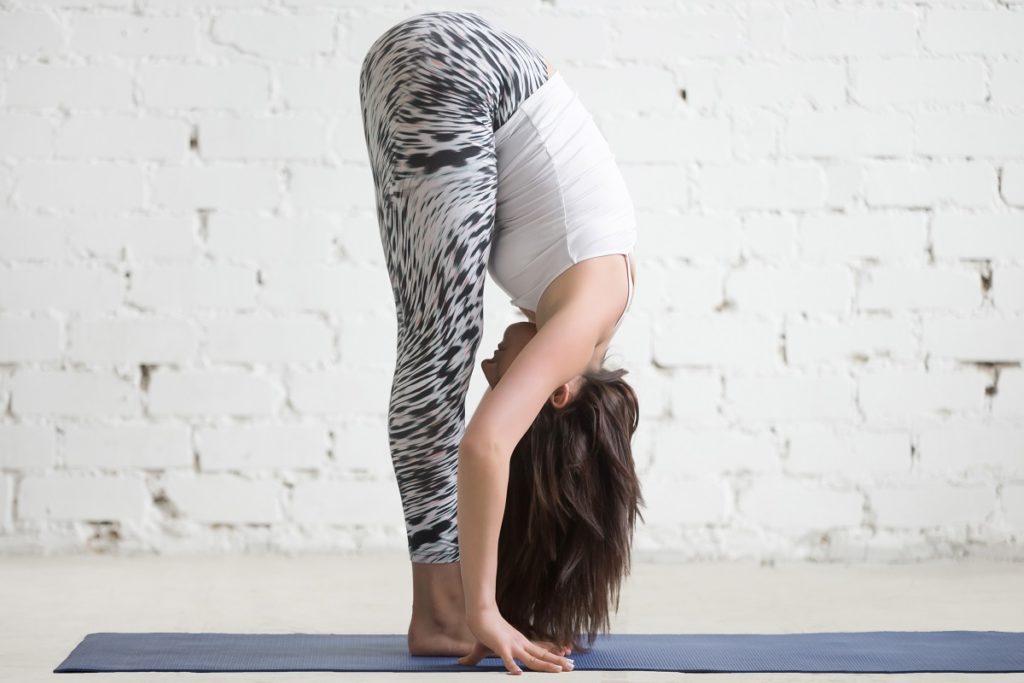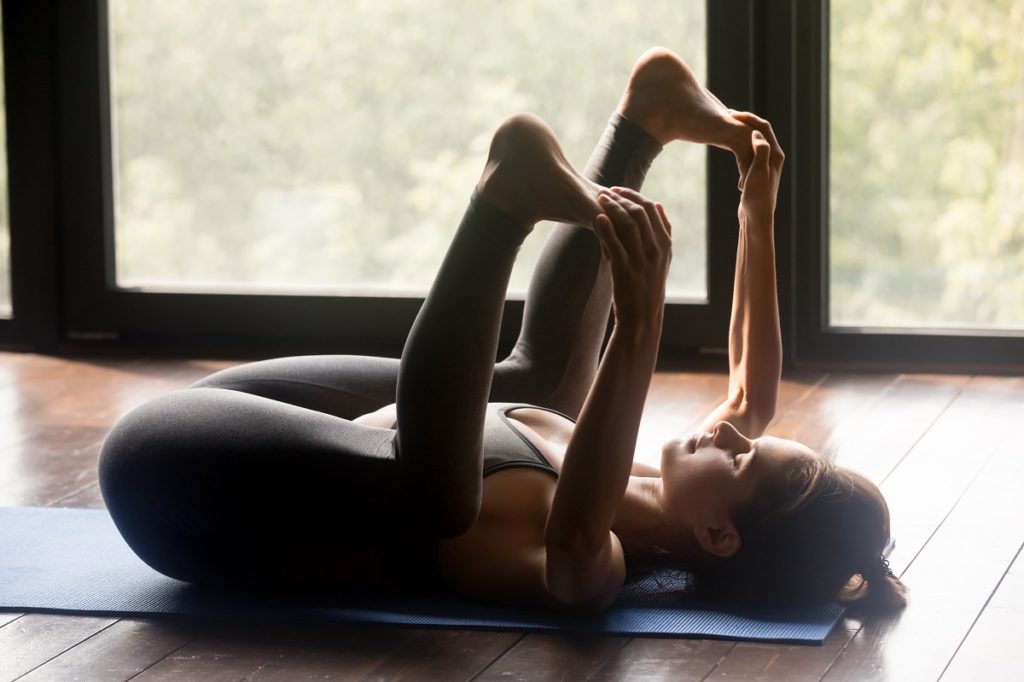At times, life can be chaotic or joyful. However, if the chaos seems never-ending and you are continuously nervous and worried, you may be experiencing early signs of anxiety.
Unfortunately, we still don’t have a clear understanding into the exact causes of anxiety. It may be caused by traumatic life experiences, hereditary factors, other prevailing health issues, or some combination.
Medical conditions that can trigger anxiety disorders include nutritional deficiencies, heart disease, diabetes, respiratory disorders, chronic pain, and irritable bowel syndrome, to name a few. In some cases, a lack of self-esteem can also cause anxiety. Other psychological issues such as depression can also be linked to or even cause anxiety.
How Yoga Helps Reduce Anxiety
Anxiety is often considered a psychological disorder. However, the root cause could also be physical. Because yoga is known to help us achieve mind-body wellness, it can further be helpful in alleviating anxiety and promoting a better quality of life.
Yoga develops a state of mindfulness, bringing awareness to the present and calming the monkey mind. In this way, yoga can lower both our stress and anxiety.
Yoga reduces stress by working on an emotional, spiritual, and physical level. It uplifts our capacity for self-love and social attachment and hence improves us at every level. Further, yogic sessions that include relaxed breathing, asanas, and meditation can reduce sympathetic activity and hence alleviate anxiety.
Eight Yoga Poses to Help Anxiety
Camel Pose
Camel pose is a back-bend posture that opens the chest and lifts the heart. It is attained by kneeling down, resting the feet on the floor, and bending backward to touch the heels with the hands.
Holding camel pose stretches the neck, chest, and shoulders, where pent-up emotions generally get trapped. This pose also opens the heart (Anahata) and throat (Vishuddhi) chakras. It enhances our sense of security and calms the anxious state.
Besides this, the heart lies above the head in camel pose, which improves circulation of blood to the brain and thus relaxes the nervous system—both of which are helpful in curing anxiety.
Helpful tips: In addition to the traditional pose, you can also place a bolster under the toes. This makes it easier to reach the heels and open the chest.
Fish Pose
To perform fish pose, lie on your arched back. Lift the chest and neck while the crown of your head rests on the floor. Fold the legs in padmasana and place your overlapped arms behind your head.
Because this pose opens the heart and focuses on throat centers, it leaves quite a satisfying emotional effect.
Helpful tips: If folding the legs into padmasana a struggle, practice the variation where the legs are kept straight. The chest is lifted, curving the back, and side-wise extended forearms provide balance to rest the top of the head on the floor.
Standing Forward Bend
As the name suggests, in this pose you bend the upper body forward from a standing position and extend your arms so the palms touch the floor.
This pose brings the body into an inversion that helps calm the mind. Further, the nervous system is soothed when fresh blood supply reaches the brain. The oxygen clears the thinking process, and this in turn can subside anxiety.
Helpful tips: For the beginner, increasing the distance between feet can help you attain the pose easily. Also, try not to lock the knees while reaching the floor as it is more helpful to keep the knees soft.
Butterfly Pose
From a sitting position, bend your legs at the knees, join your heels together, and place your feet closer to the perineum. Clasp your hands around your toes. Keep your spine erect throughout the practice.
Sitting in butterfly pose stretches the groins and pelvic region. On an energetic level, it stimulates the sacral (svadhisthana) chakra associated with emotions, pleasure, sensuality, and creativity. The pose enables the practitioner to open up about their feelings, increasing their passion for life by overcoming their anxious or stressful thoughts.
Butterfly pose (aka cobbler’s pose) improves stability and state of mind. This is beneficial for relieving anxiety, especially if the root cause is depression.
Helpful tips: Yogis also recommend the variation of reclining butterfly pose for enhanced relaxation of the mind and body. You can also place a yoga block under the knees as the added support can help you remain in the stretch.
Corpse Pose
Lie down on the back, extending the legs and straightening the arms slightly away from the body. Keeping motionless, bring your body into complete rest.
Bringing your body to a halt with focused, rhythmic breathing brings a sense of calm, much like meditation. Practicing this pose as closure after rigorous physical exercise enables the practitioner to consciously relax the body and mind.
Deliberately meditating after dynamic yogic sessions enhances mindfulness and resilience.
Helpful tips: To bring serenity and rest to the mind, it helps to keep the eyes open.
Revolved Head-to-Knee Pose
Assume a seated posture, extending widely separated legs in front. Hold your left big toe with your left hand, bringing the head to the left knee. Simultaneously, raise the right arm overhead and grab the left foot, twisting the trunk upward.
The opening of the chest elevates the heart and improves blood circulation. Also, bringing the head down to the knee supplies oxygenated blood and nutrients to the nervous system. This pose enhances clarity of mind and relieves anxiety.
Helpful tips: If the resting leg is lifted on knee or hip, you can fold it on the knee and keep the foot near the perineum. This pose is sometimes mistaken as focusing on rotating the neck. Try opening the torso to the front instead of straining the neck to get the desired benefits and avoid injury.
Bridge Pose
This is a back-bend pose attained by lying on your back with bent knees, keeping feet and arms on the floor. Lift your hips and lower back, pressing your palms and feet on the floor.
This pose puts the body into a mild inversion, regulating the neurotransmitter by nourishing the brain with oxygen-rich blood.
Helpful tips: While performing bridge pose, the practitioner may sometimes find it difficult to keep the hips lifted. For this, yogis suggest placing a bolster under the lower back. To ensure you experience the internal benefits of this pose, such as mental peace, concentrate on your breath.
As the name suggests, happy baby pose is a yogic exercise that allows us to meet that stress-free inner child within us.
Lie down on the back with bent knees. Lift feet towards the ceiling. Next, grab your feet with your hands, pulling the legs so that the knees are drawn towards the armpits.
This pose opens the hips, inner thighs, and groin, areas where the body often traps stress, emotion, and muscular tension. The pose also stimulates the sacral chakra and solar plexus. It builds confidence and self-acceptance, which can relieve anxiety and other psychological disorders.
Helpful tips: Experts suggest that rocking side-to-side while holding this pose elevates its relaxing effect by gently massaging the back, shoulders, and glutes.
It’s time to try all of the above-mentioned poses to melt your tensions away and get rid of any anxiety that you’ve been facing in your life. Keep practicing yoga to uplift your energy levels and unlock the door of your happy place, where there is no place for anxiety disorder.
Images from iStock/fizkes.




